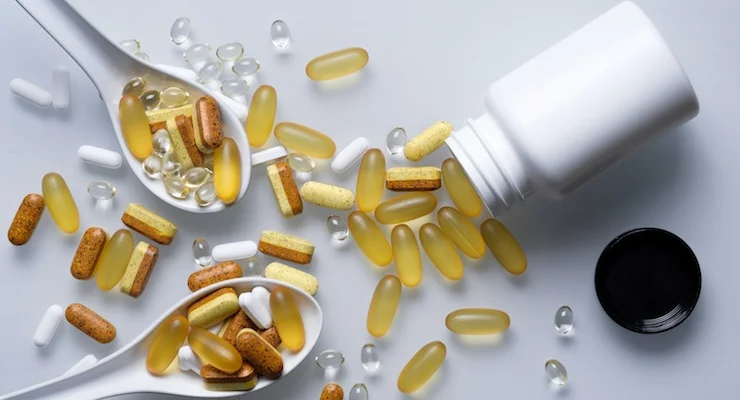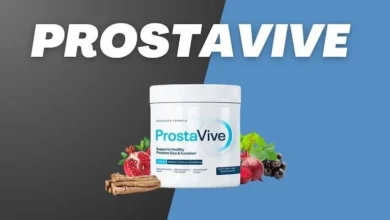Provascin: A Nutraceutical for Cardiovascular Support

In the field of natural health supplements, Provascin — often marketed under the brand Purica — is presented as a cardiovascular and circulatory support formula. It’s claimed to help with blood flow, cholesterol balance, detoxification, and related functions. In this article, we’ll explore what Provascin is, its active ingredients, purported benefits, usage guidelines, safety and criticism, and how it fits into cardiovascular wellness.
What Is Provascin? Origins and Purpose
Provascin (sometimes spelled “PROVASCIN”) is a nutraceutical formulation produced by Purica, a company that develops natural health products
The name suggests “vascular support” (“vascin” from vessels) — the formula is intended to support blood vessel health, circulation, and heart function. On product pages, Provascin is described as a “comprehensive supplement … designed to assist the heart health needs of all adults.”
Purica positions Provascin to target multiple pathways involved in cardiovascular risk, including oxidative stress, cholesterol balance, venous insufficiency, and “toxic tissue waste” removal.
Thus, Provascin sits in the category of adjunctive supplements — those marketed to support, rather than replace, conventional approaches to heart health.
Key Ingredients & Mechanisms of Action
To understand how Provascin is claimed to work, it helps to look at its ingredient profile and the theoretical mechanisms.
According to the product description, a typical capsule formula includes (among others):
-
L-Carnitine
-
Alpha-Ketoglutaric Acid
-
Chaga (micronized, organic)
-
Coenzyme Q10 (CoQ10)
-
Betaine Hydrochloride
-
DL-Alpha-Lipoic Acid
-
Grape Seed Extract
-
Green Tea Extract (Nutricol blend)
Here’s how these ingredients are theorized to act:
-
L-Carnitine: aids fatty acid transport into mitochondria for energy production, particularly in heart muscle.
-
CoQ10: a well-known antioxidant that supports cellular energy in mitochondria and protects against oxidative damage in cardiovascular tissues.
-
Chaga: an adaptogenic mushroom with antioxidant potential, believed to help reduce oxidative stress and support vascular health.
-
Alpha-Ketoglutaric Acid: involved in metabolic cycles and could act as an ammonia binder, reducing toxic stress on tissues.
-
Betaine: helps lower homocysteine levels, a risk factor for vascular damage.
-
Alpha-Lipoic Acid: both fat- and water-soluble antioxidant; may aid glucose metabolism and reduce glycation damage in vessels
-
Grape Seed & Green Tea Extract: supply polyphenols, flavonoids, and other antioxidants that may reduce inflammation, improve endothelial function, and scavenge free radicals.
These combined ingredients suggest a multi-mechanism approach: improving energy metabolism, antioxidant defense, vascular integrity, and metabolic balance.
Claims & Purported Benefits
Provascin is marketed with a variety of claimed benefits. While scientific backing may be limited, here’s what the manufacturers and some health articles suggest:
Cardiovascular & Circulatory Support
-
Improved blood vessel relaxation, supporting healthier blood pressure levels
-
Support for cholesterol balance, particularly by managing oxidative stress on LDL cholesterol.
-
Assistance in conditions like chronic venous insufficiency (CVI), improving venous return and reducing pooling in lower extremities.
Metabolic & Glucose Effects
-
Support for healthy glucose metabolism and insulin sensitivity.
-
Aid in weight management through improved energy usage and metabolic efficiency.
Detoxification & “Tissue Waste” Removal
-
The product language describes “removal of toxic tissue waste.” This is a common naturopathic claim, often referring to metabolic byproducts, oxidative stress, or inflammatory residues.
-
Enhanced antioxidant clearance, reducing cellular damage from free radicals. This role is theorized via ingredients like CoQ10, grape seed, green tea, and alpha lipoic acid.
Stress Reduction & Systemic Support
-
Some claims include stress reduction, through adaptogens like chaga and antioxidant capacity that modulate oxidative stress.
-
Suggested support for muscle repair or general vitality in tissues.
Because these are supplement claims, they generally fall under structure/function statements rather than guaranteed therapeutic effects.
Dosage, Usage & Practical Considerations
When using a supplement like Provascin, proper dosing and user guidance become critical. Here’s what is generally stated online:
Dosage Guidelines
-
For preventive use, makers suggest 3–4 capsules daily.
-
For existing cardiovascular risk or conditions, they recommend 6–8 capsules daily.
-
The product comes in various sizes — e.g. 120-capsule bottles, 240-capsule bottles.
Form & Administration
-
Capsules are presumably vegetarian/vegan and designed for oral intake. Some listings mention non-GMO, gluten-free formulations.
-
The recommended dose is typically split into morning and evening intake (manufacturer’s instructions usually specify).
-
Often advised to take with food to improve absorption, especially for fat-soluble components like CoQ10.
Precautions & Contraindications
The product descriptions include warnings such as:
-
Consult a healthcare provider before use if pregnant or breastfeeding, or if there is liver disorder or symptoms of liver trouble (abdominal pain, dark urine, jaundice).
-
Exercise caution if you have iron deficiency, are taking blood pressure medications, blood thinners, diabetes medicines, or have kidney disease, liver disease, or autoimmune conditions.
-
Always check with a certified health professional before combining with prescription treatments.
Storage & Quality
-
Store in a cool, dry place away from children.
-
Do not use if the safety seal is broken.
-
Being a supplement, quality control, batch purity, and third-party testing are relevant but not always transparently published.
Scientific Evidence, Criticism & Skepticism
As with many nutraceuticals, Provascin faces critical scrutiny due to limited clinical trials and regulatory constraints. Below are known gaps and considerations.
Lack of Large-Scale Clinical Trials
-
Publicly available scientific literature (e.g., in peer-reviewed medical journals) on Provascin specifically is limited or non-existent.
-
Claims often rest on extrapolation from known effects of individual ingredients (e.g. CoQ10, L-carnitine) rather than trials of the formulation itself.
Variability in Supplement Quality
-
Because dietary supplements are regulated less strictly than drugs in many jurisdictions, batch-to-batch consistency, purity, and actual dosage may vary.
-
Interpretation of effects is harder if the formulation changes or if active compounds degrade over time.
Overlapping Effects & Redundancy
-
Many ingredients have overlapping antioxidant or cardiovascular support roles. This redundancy can complicate identifying which ingredient is driving any effect.
-
Some compounds may interact or compete for absorption.
Possible Interaction & Overuse Risks
-
Some users may already take statins, blood pressure meds, or anticoagulants — combining with supplements affecting circulation or oxidative stress poses interaction risk.
-
Excessive doses may stress metabolism or liver pathways without added benefit.
Marketing vs Therapeutic Claims
-
Some marketing language (e.g. “removal of toxic waste”) is vague and not clinically defined.
-
Consumers may interpret supplement claims as cures rather than adjuncts; this can be misleading.
Because of these limitations, Provascin should be viewed cautiously. Well-designed clinical trials would be needed to validate its full efficacy and safety.
Where Provascin Fits in a Heart-Healthy Regimen
Supplements like Provascin may have a role — but their effectiveness is maximized when integrated with foundational lifestyle practices.
-
Dietary Foundation
-
A heart-healthy diet rich in vegetables, whole grains, lean proteins, and healthy fats is primary.
-
Supplements cannot substitute for dietary deficiencies.
-
-
Physical Activity & Weight Control
-
Regular exercise supports circulation, blood pressure, lipid balance.
-
Maintaining a healthy body weight lessens cardiovascular strain.
-
-
Blood Pressure & Cholesterol Management
-
Use of clinically-proven pharmaceuticals when prescribed is essential.
-
Supplements may serve as adjunct support, not primary therapy.
-
-
Stress Management & Sleep
-
Chronic stress, poor sleep, and inflammation contribute heavily to cardiovascular risk.
-
Supplement effects are likely amplified when stressors are minimized.
-
-
Regular Medical Monitoring
-
Periodic checks of lipid panels, blood pressure, glucose, kidney and liver function are essential.
-
Supplements should be evaluated in the context of clinical markers.
-
In short, Provascin might augment existing strategies — but it cannot replace core medical care or proven lifestyle habits.
Conclusion
Provascin, produced by Purica, is a nutraceutical formula positioned for cardiovascular support, vascular health, and circulatory balance. Its blend of L-Carnitine, CoQ10, chaga, alpha lipoic acid, betaine, and antioxidant extracts underlies theoretical mechanisms such as improved energy metabolism, oxidative stress reduction, and vascular protection.
While the claims of Provascin are broad — from improved cholesterol balance and venous support to detoxification and glucose metabolism — the clinical evidence specific to the full supplement remains limited in public literature. Users should approach it as an adjunct tool rather than a primary treatment. Safety considerations, possible interactions, and proper medical guidance are essential before use.




